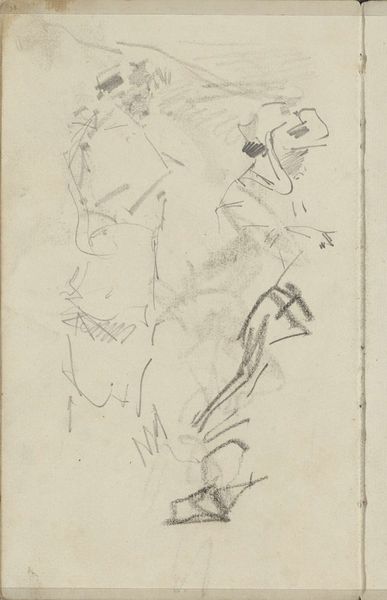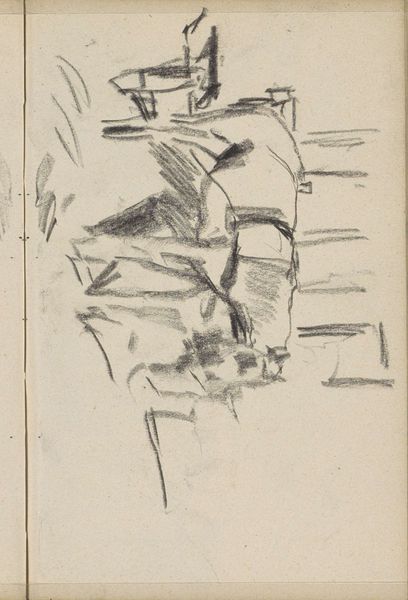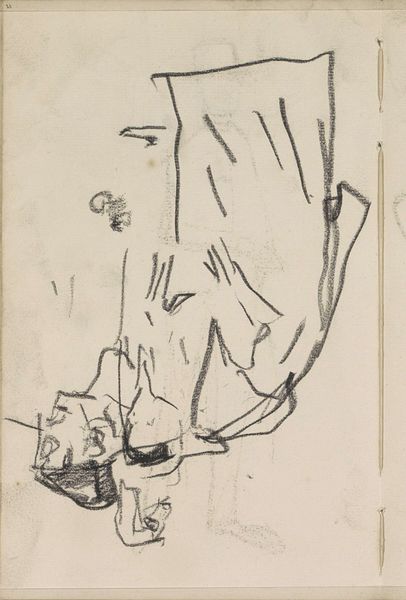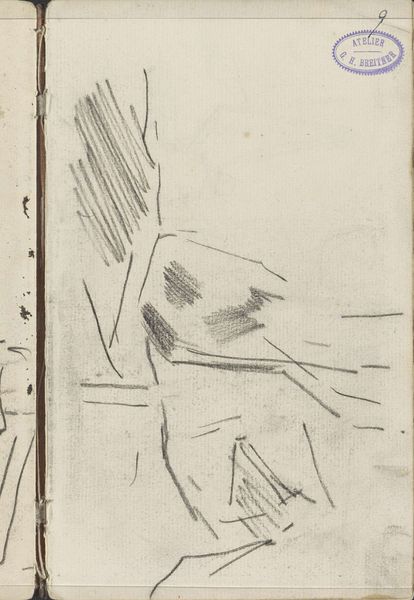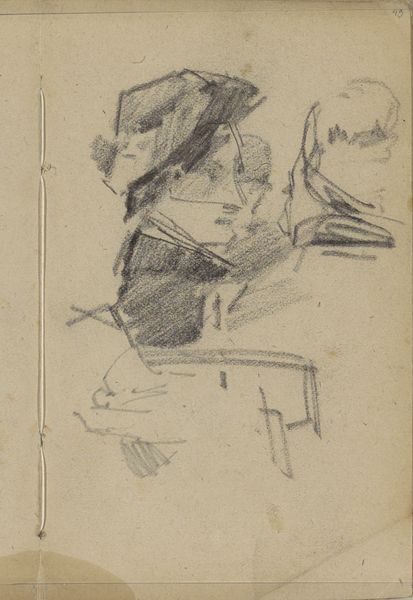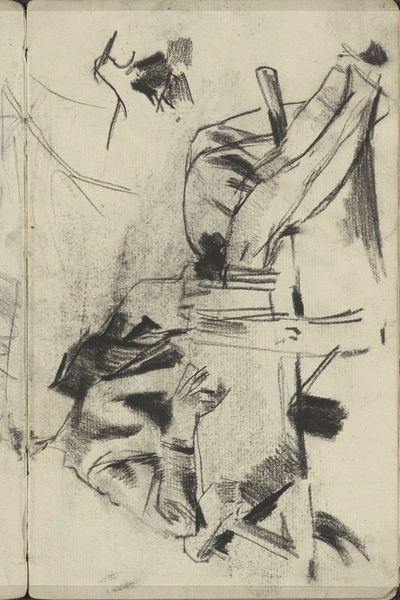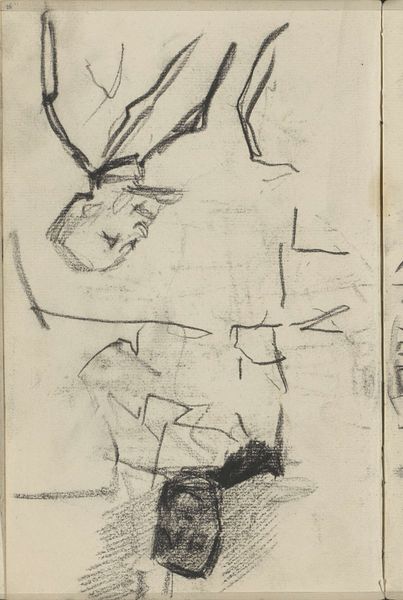
drawing, pencil, graphite
#
portrait
#
drawing
#
impressionism
#
landscape
#
pencil
#
graphite
Copyright: Rijks Museum: Open Domain
Editor: So, here we have Breitner’s pencil and graphite drawing, "Zittende man, mogelijk schrijvend of tekenend," from 1887, here at the Rijksmuseum. The rapid lines and the stark contrast really convey a sense of isolation and introspection to me. What do you see in this piece? Curator: I'm drawn to the figure's ambiguity. Is he writing, drawing, or simply lost in thought? Breitner, an important figure of the Amsterdam Impressionism movement, was deeply interested in portraying modern life, capturing fleeting moments in urban landscapes. This sketch could represent a marginalized figure struggling to make a living through intellectual or artistic work. Considering that Breitner worked a lot as a war correspondent in the 1880s, do you think the rapid execution, the sense of a scene quickly captured, resonates with that period of upheaval? Editor: That's fascinating! I hadn't thought about it that way. The quick lines do feel urgent, almost journalistic. But why the ambiguity, especially about what the man is doing? Curator: Ambiguity becomes a powerful tool here. Breitner avoids defining him too narrowly, inviting us to project our own interpretations onto him. In doing so, he highlights the often precarious position of the artist or intellectual in society. By portraying the figure with uncertainty, the artist might challenge societal expectations. Are we prepared to acknowledge and accept these individuals on their own terms? Editor: That makes sense. So, it's less about the literal act of writing or drawing and more about the broader question of the individual's role within society and potentially challenge the definition of work and creativity itself? Curator: Precisely. It is a commentary of representation and visibility. Editor: Well, I’ll certainly look at it differently now! Thanks for that insight! Curator: My pleasure. The beauty of art lies in its capacity to invite ongoing dialogues!
Comments
No comments
Be the first to comment and join the conversation on the ultimate creative platform.
